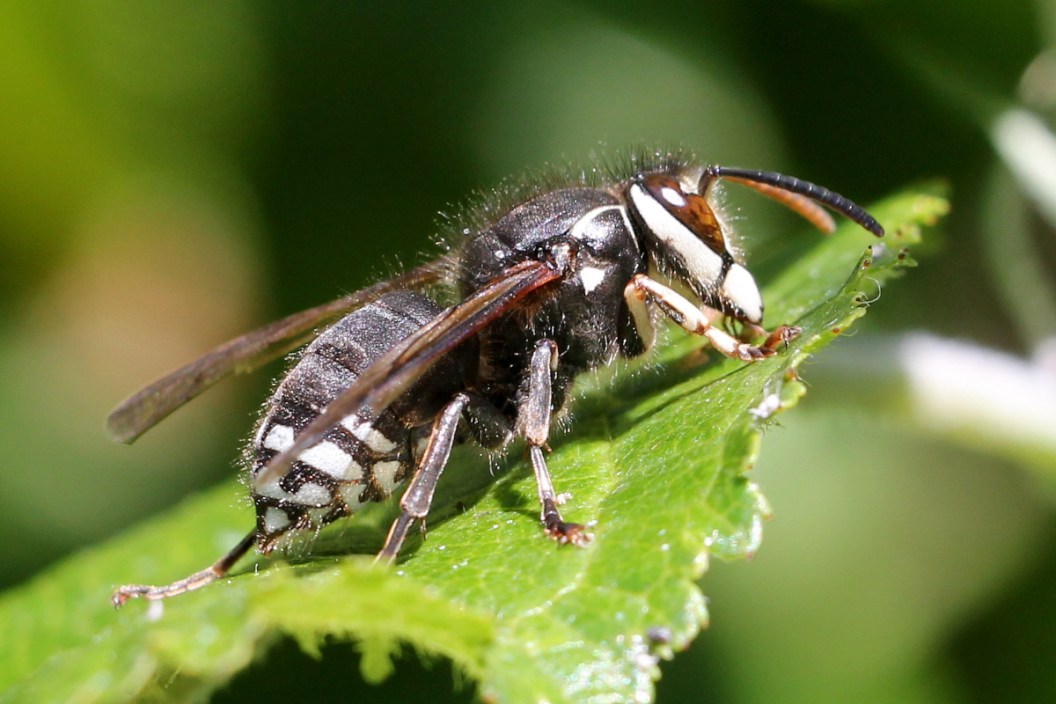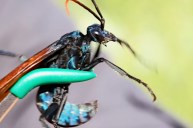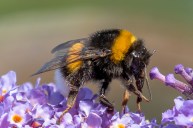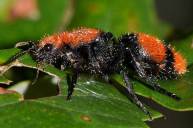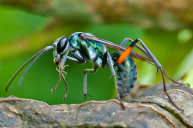The bald-faced hornet is a common insect with a nasty sting.
If you spend any amount of time in the outdoors here in North America, you are likely to encounter some stinging insects at some point or another. One of the more common species you may run into is the bald-faced hornet, or dolichovespula maculata as it is known by its scientific name.
Odds are you have at least seen their large paper nests hanging from a tree in the forest. Or perhaps you have encountered infestations under the eaves and overhangs of your home or barn.
Either way, this is everything you ever wanted to know about this aggressive insect with the huge stinger and a frightening appearance.
What is a bald-faced hornet?
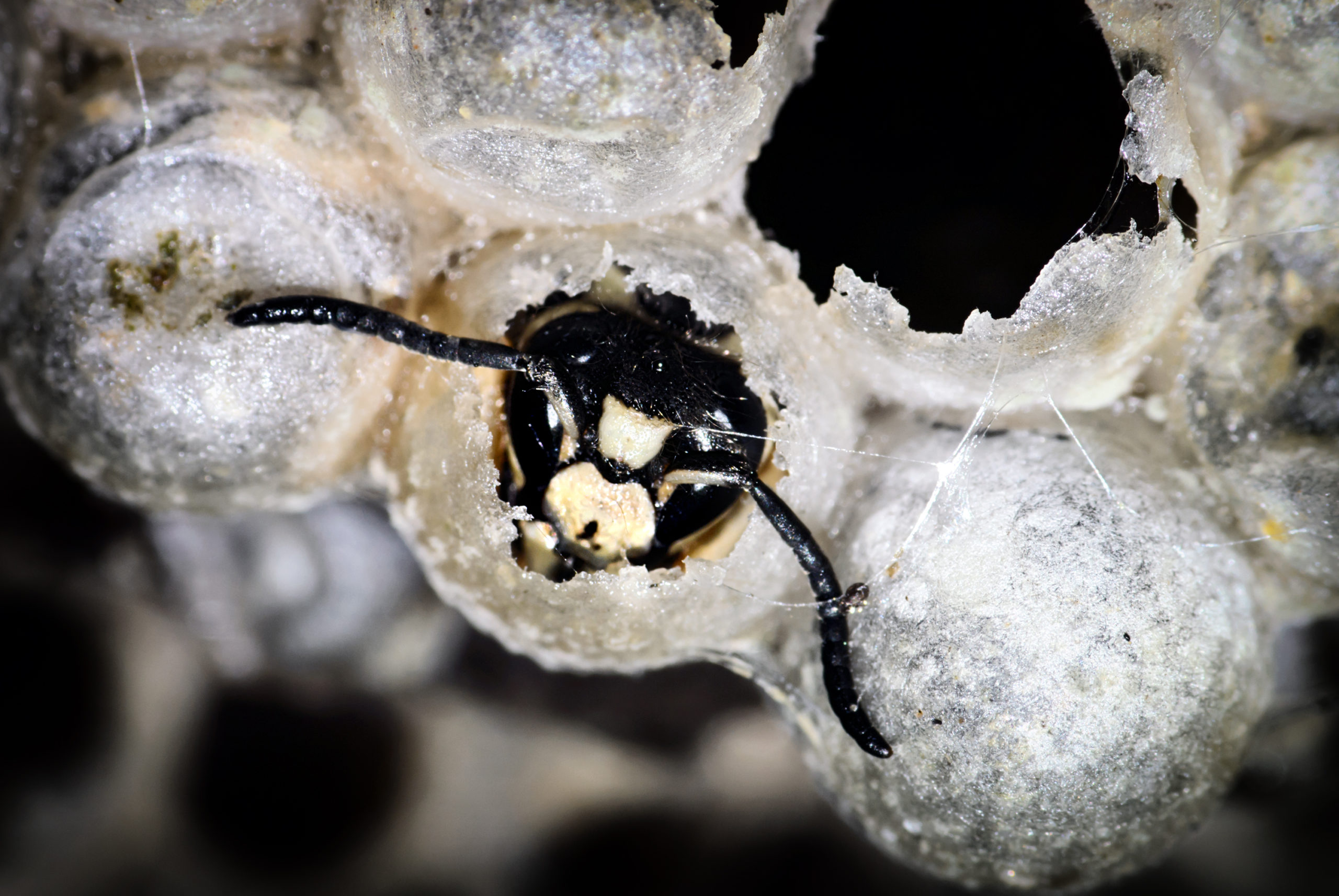
This bug causes confusion in some areas mainly because it has a glut of common names that may vary from region to region. When people talk about bull wasps, white-faced hornets, or blackjackets, they are usually referring to the bald-faced hornet. This is a large insect, reaching over half an inch in length on average for the female workers. Fertilized queens are usually a bit larger.
In addition to their size, bald-faced hornets have an appearance that is simply intimidating to most humans. Especially if you suffer allergic reactions to insect stings. The head is characterized by two large, dark eyes on a white head. Most of the body is black except for three white stripes of coloration on the very end of the abdomen. Those stripes immediately draw the eye towards the large smooth stinger jutting from the end. According to the Penn State University, the venom from the bald-faced hornet has proteins that specifically target nerves and cause pain. The ultimate defense for the colony against predators that might want to eat the vulnerable hornet larvae and pupae before they can mature. Or against humans who are unfortunate enough to disturb he nest accidentally.
Unlike honeybees and some other stinging insects, bald faced hornets can sting a victim repeatedly with no harm to the insect itself, which they often do if the intruder or nest threat persists. This can create a dangerous situation for anyone with allergies to hornet stings.
We should mention that despite the name, and place in the greater order of stinging insects known as Hymenoptera, the bald-faced hornet is not considered a true hornet in the world on entomology. In fact, they are members of the greater Vespidae family, or social wasps. It may surprise some to learn they are technically a species of yellowjacket. Even if they have white markings instead of the usual distinctive yellow and black pattern.
What is the range of these insects? And where are bald-faced hornet nests commonly built?
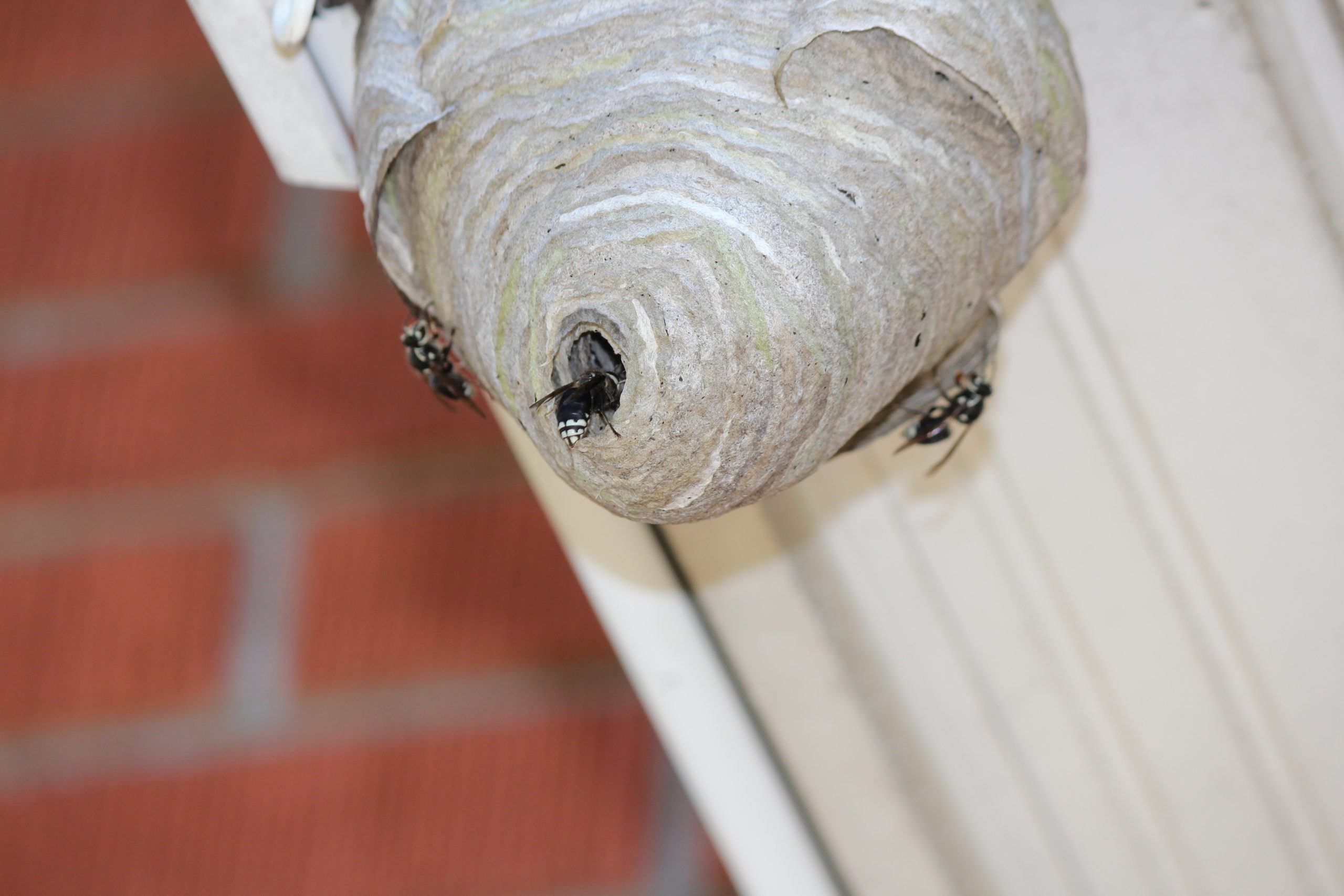
Like most members of the vespa family, this paper wasp has an extensive range across much of North America. They range as far east as Maine and as far south as Florida and Louisiana. They are extremely common in states like the Carolinas, Georgia, Alabama, and Mississippi. The range of this insect peters out a bit in the plains, and across much of Texas. There are some on the west coast across much of Washington, Oregon, and California. These wasps also have an extensive range across southeastern Alaska and much of Canada.
According to the Missouri Department of Conservation, bald-faced hornets prefer trees and shrubs for their nests. Although they sometimes also built nests on buildings, bridges, and even utility poles. The nests are quite distinctive because the workers chew up wood fibers using their saliva to produce them. Each nest is only used for one year before being abandoned by the queen in the late summer. She finds somewhere to overwinter before emerging to make a new nest the following spring.
Even though the nests are basically a crude form of paper, a bald-faced hornet's nest is extremely tough and resistant to the elements. I had one in a prominent spot in my hunting area several years ago. The remains of the nest were in that tree for three to four years after it was abandoned before it finally fell apart and dropped to the forest floor.
The life cycle of the bald-faced hornet.
This insect has a fascinating social structure and overall life cycle. As we already mentioned, the queen hibernates all winter before constructing a new nest every spring. This is also the season that new queens construct their first nest. The queen cares for her eggs, pupae, and larvae until they hatch and develop into workers. These workers then take on the grunt work in the colony while the queen focuses on egg-laying.
Near the end of the summer, the queen will lay eggs that hatch into new queens and male bald-faced hornets. One interesting aspect of this species is that the sex of the insect is determined based on if the egg is fertilized or not. Fertilized eggs develop into queens and unfertilized ones develop into males. This unusual mode of reproduction is known as haplodiploidy.
While most worker wasps are sterile females, bald-faced hornets are different. The workers can lay unfertilized eggs that can hatch males, potentially creating conflict within the nest between queens and workers. Sometimes workers may even kill the queen to take over. Although this is usually rare. Like many species of wasp and bee, the male's only purpose in life is to mate with the new queens and they end up dying soon afterwards.
How dangerous are bald-faced hornets? And how do you get rid of them?
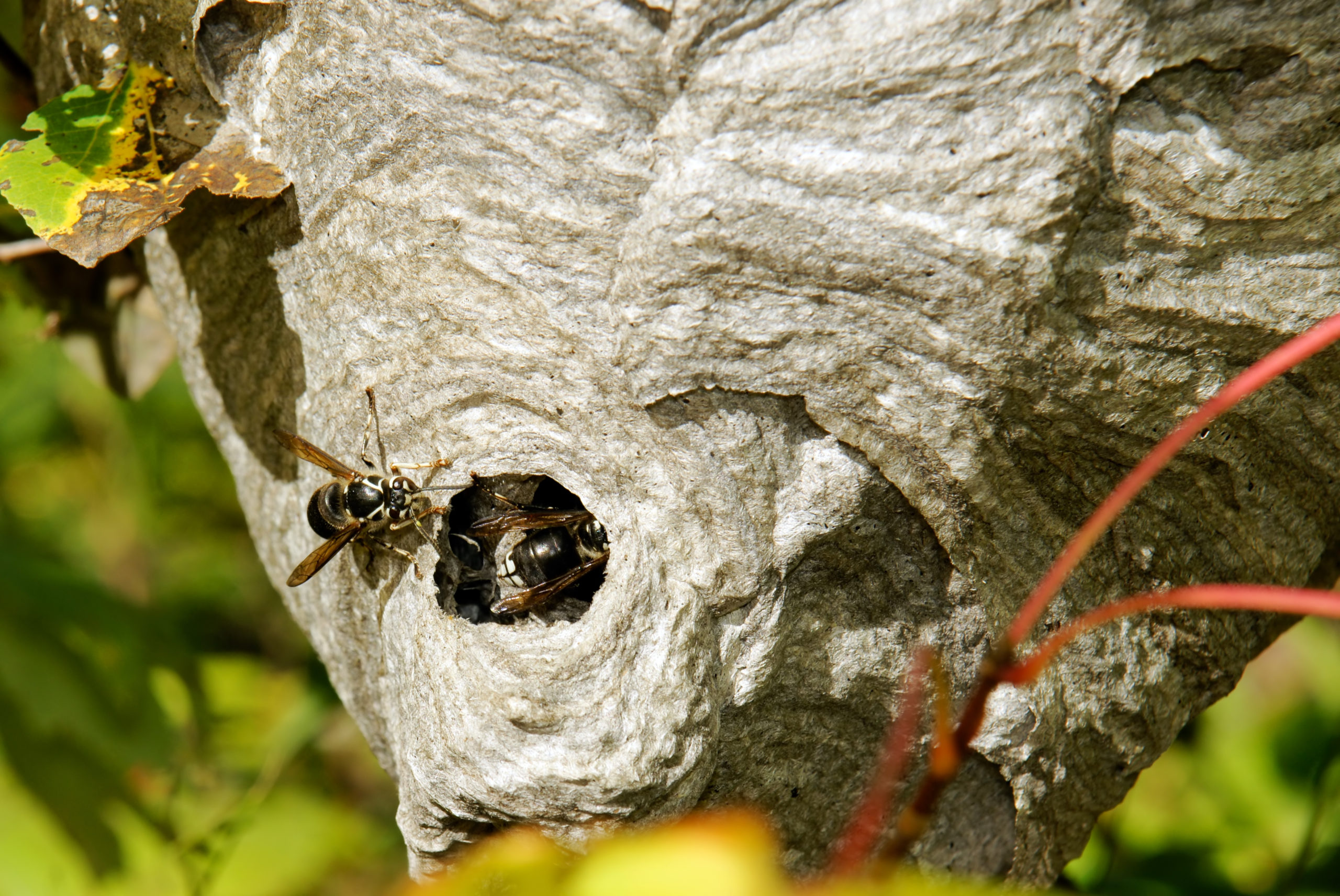
Just like any wasp, the sting of a bald-faced hornet is extremely painful and could be dangerous to anyone who is allergic. Even if you are not allergic, if the hornets decided to gang up on you and sting you enough, it could cause some health complications like anaphylactic shock if you are stung enough times. It is advised to give their nests a wide berth. Fortunately, many of their nests are built extremely high in trees. Some are built so high up many people do not realize they are even there.
If you are stung and are not allergic, you can usually mitigate the pain with a product like Sing-Kill. Home remedies include saltwater, or baking soda combined with water to create a paste. Rub it on the affected area to help relieve the pain and swelling.
Sometimes these hornets build nests in locations are less than ideal Maybe they built one on or near a home. In most cases, the nest can be neutralized with wasp and hornet sprays sold in many stores. Although we recommend wearing thick clothing and making your attack on the nest at night when the hornets will be less active. For high aerial nests in the top of trees, you might want to consider professional pest control services.
The best way to avoid stings is to simply leave the hornets alone in the first place. You should only try to remove a nest if there is immediate danger to humans. Because these wasps are both pollinators and carnivores of human pests like horseflies and deer flies. They also attack arthropods like centipedes and spiders at times. Who wouldn't appreciate that?
Products featured on Wide Open Spaces are independently selected by our editors. However, when you buy something through our links, we may earn a commission.
For more outdoor content from Travis Smola, be sure to follow him on Twitter and check out his Geocaching and Outdoors with Travis YouTube channels.
NEXT: THE AXIS DEER AND HOW THEY'RE IMPACTING PARTS OF THE UNITED STATES
WATCH
